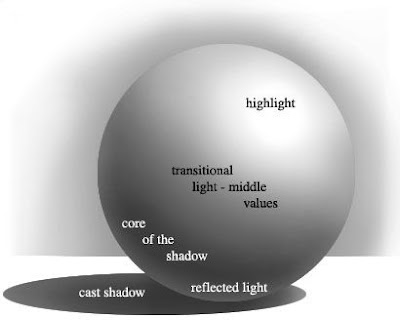During this term we are going to work on perspective. First of all and after watching the video and the presentation to figure out the axonometric projection fundamentals, you´ll be given a handout to desing and draw 3D solids using SketchUp.
Download the cube and start creating your own solid. You have to save and upload it to the 3D Warehouse website (you´ll need a gmail account).
Here you can find the worksheet that you are going to use after creating your 3D models.
Here you can find the worksheet that you are going to use after creating your 3D models.
I´ll give you an isometric handout so that you can work on the drawing and shading of a 3D cube like the one on the picture. If you need to download the file and print it out, here you can find it.
First we´ll try to draw different solids based on the same cube. If you want you can include slanted surfaces. Click here to get the worksheet.
A good choice could be to pick numbers 3 for the darkest side of the cube, 1 for the lighter part and 5 for the intermediate side. If you have slanted surfaces beware to choose another value according to the position of the light source.
Link to access GeoGebra applet (isometric projection/orthographic views)











